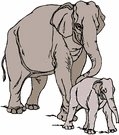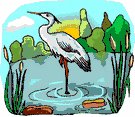
Worksheets and No Prep Teaching Resources
Reading Comprehension Worksheets
Animal Themes
Freshwater

Animal Themes
 Worksheets and No Prep Teaching Resources Reading Comprehension Worksheets Animal Themes Freshwater |
 Animal Themes |
| edHelper's suggested reading level: | grades 6 to 8 | |
| Flesch-Kincaid grade level: | 6.93 |
| Freshwater |

|
 1 Water covers about 70% of the Earth's surface. About 2.5 percent is freshwater, and the remaining 97.5% is saltwater. Much of Earth's freshwater is locked up as ice and groundwater. Only about 1.2 percent of Earth's water is found on Earth's surface in our lakes, rivers, and wetlands. Let's learn more about these three different types of freshwater biomes.
1 Water covers about 70% of the Earth's surface. About 2.5 percent is freshwater, and the remaining 97.5% is saltwater. Much of Earth's freshwater is locked up as ice and groundwater. Only about 1.2 percent of Earth's water is found on Earth's surface in our lakes, rivers, and wetlands. Let's learn more about these three different types of freshwater biomes. |
Create Weekly Reading Books
Prepare for an entire week at once! |
| Leave your feedback on Freshwater (use this link if you found an error in the story) |
 |
Animal Themes
|
 |
Freshwater
|
|
|